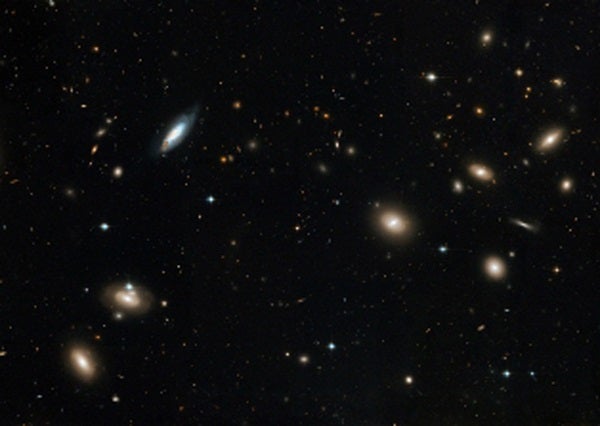A long-exposure Hubble Space Telescope image shows a majestic face-on spiral galaxy located deep within the Coma cluster of galaxies, which lies 320 million light-years away in the northern constellation Coma Berenices.
The galaxy NGC 4911 contains rich lanes of dust and gas near its center. These are silhouetted against glowing newborn star clusters and iridescent pink clouds of hydrogen, indicating ongoing star formation. Hubble has also captured the outer spiral arms of NGC 4911, along with thousands of other galaxies of varying sizes. The high resolution of Hubble’s cameras, paired with considerably long exposures, made it possible to observe these faint details.
NGC 4911 and other spirals near the center of the cluster are being transformed by the gravitational tug of their neighbors. In the case of NGC 4911, wispy arcs of the galaxy’s outer spiral arms are being pulled and distorted by forces from a companion galaxy, NGC 4911A — upper right in the image. The resultant stripped material will eventually be dispersed throughout the core of the Coma cluster, where it will fuel the intergalactic populations of stars and star clusters.
The Coma cluster is home to almost 1,000 galaxies, making it one of the densest collections of galaxies in the nearby universe. The cluster continues to transform galaxies due to the interactions of close-proximity galaxy systems within the dense cluster. Vigorous star formation is triggered in such collisions.
Galaxies in this cluster are so densely packed that they undergo frequent interactions and collisions. When galaxies of nearly equal masses merge, they form elliptical galaxies. Merging is more likely to occur in the center of the cluster where the density of galaxies is higher, giving rise to more elliptical galaxies.










